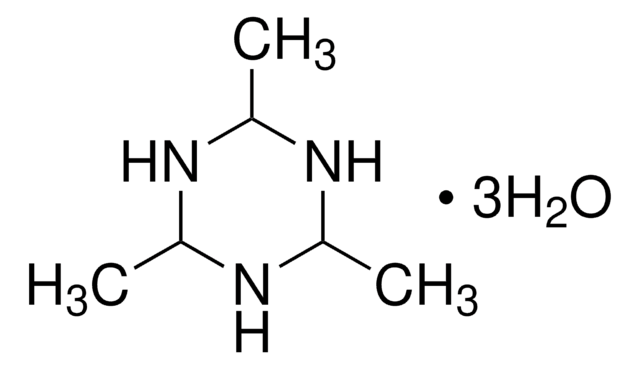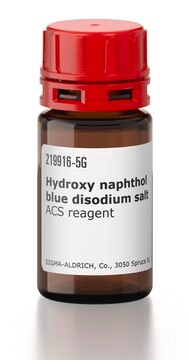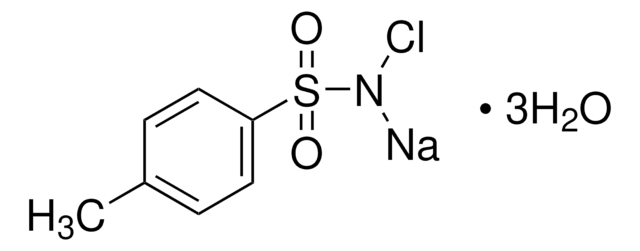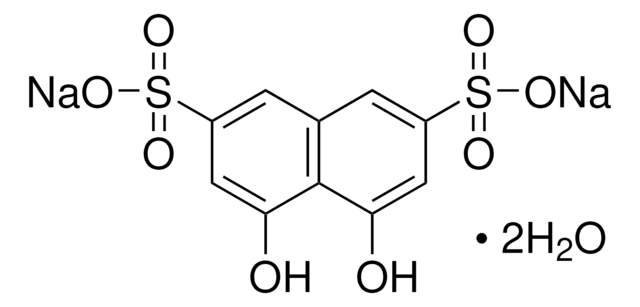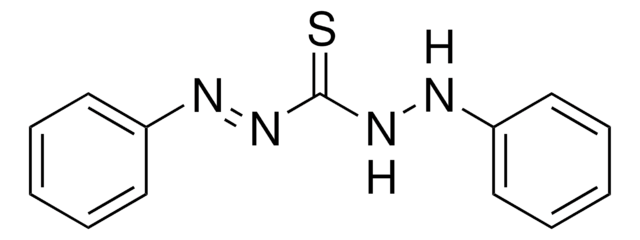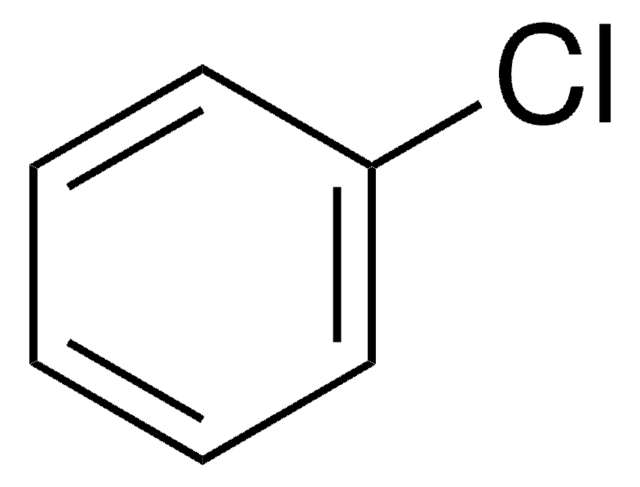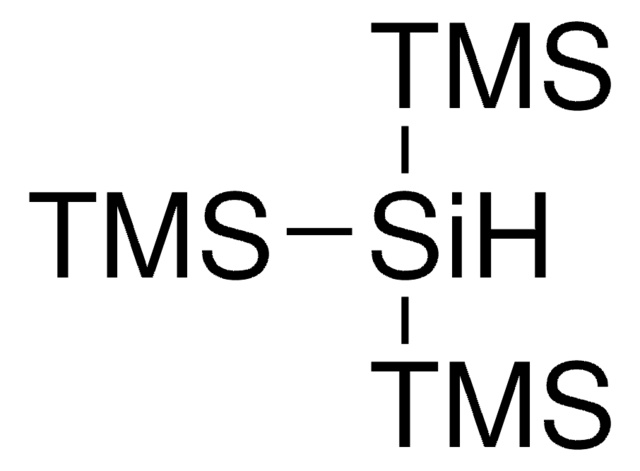おすすめの製品
形状
powder or crystals
品質水準
組成
Dye content, 95%
テクニック
titration: suitable
溶解性
ethanol: 1 mg/mL, clear, dark red
λmax
528 nm
アプリケーション
diagnostic assay manufacturing
hematology
histology
保管温度
room temp
SMILES記法
[I-].CC[n+]1c(\C=C\c2ccc(cc2)N(C)C)ccc3ccccc13
InChI
1S/C21H23N2.HI/c1-4-23-20(16-12-18-7-5-6-8-21(18)23)15-11-17-9-13-19(14-10-17)22(2)3;/h5-16H,4H2,1-3H3;1H/q+1;/p-1
InChI Key
JOLANDVPGMEGLK-UHFFFAOYSA-M
類似した製品をお探しですか? 訪問 製品比較ガイド
アプリケーション
Quinaldine Red has been used as a fluorescent probe for α1-acid glycoprotein (AAG).
生物化学的/生理学的作用
Quinaldine Red (2-(p-Dimethylaminostyryl) quinoline ethiodide) is a very dark red or reddish-black colored powder. It has been used mainly for regulation of cell proliferation, in diagnostic agents of disease related with amyloid accumulation, detecting enzyme activity and dental bleaching materials. In addition, quinaldine red also been implicated in treatment of allodynia and virus infectious diseases. It is colorless at pH 1.4 and red at pH 3.2.
保管分類コード
11 - Combustible Solids
WGK
WGK 3
引火点(°F)
Not applicable
引火点(℃)
Not applicable
適用法令
試験研究用途を考慮した関連法令を主に挙げております。化学物質以外については、一部の情報のみ提供しています。 製品を安全かつ合法的に使用することは、使用者の義務です。最新情報により修正される場合があります。WEBの反映には時間を要することがあるため、適宜SDSをご参照ください。
労働安全衛生法名称等を表示すべき危険物及び有害物
名称等を表示すべき危険物及び有害物
労働安全衛生法名称等を通知すべき危険物及び有害物
名称等を通知すべき危険物及び有害物
Jan Code
201316-25G:4548173986357
201316-VAR:
201316-5G:4548173986364
201316-BULK:
この製品を見ている人はこちらもチェック
World Health Organization
The International Pharmacopoeia, 1 (2006)
H Imamura et al.
Pharmaceutical research, 11(4), 566-570 (1994-04-01)
We examined different fluorescent probes suitable for fluorometric determination of alpha 1-acid glycoprotein (AGP) in serum. Quinaldine red (QR) was shown to bind strongly and selectively to AGP. Taking advantage of the enhanced fluorescence of QR in the presence of
H Imamura et al.
Biological & pharmaceutical bulletin, 16(9), 926-929 (1993-09-01)
We attempted to develop a fluorescent probe superior to conventional ones (8-anilino-1-naphthalenesulfonate and auramine O) for use in the study of drug-binding sites on alpha 1-acid glycoprotein (AGP). It was found that quinaldine red (QR) strongly bound to AGP and
A I Ivanov et al.
Clinical and experimental medicine, 2(3), 147-155 (2002-11-26)
The acute-phase response alters the composition of carrier proteins in plasma, which may affect the blood deposition and transport of biomediators and drugs. The effect of the acute-phase response on the ligand binding ability of plasma was studied in leukemic
Paul Zuck et al.
Analytical biochemistry, 342(2), 254-259 (2005-06-14)
Miniaturization of high-throughput screening (HTS) assays has several obvious advantages, including increased throughput and lower cost by reduction in reagent consumption. Although absorbance assays are widely used in research laboratories, their application for HTS in a low-volume format has been
ライフサイエンス、有機合成、材料科学、クロマトグラフィー、分析など、あらゆる分野の研究に経験のあるメンバーがおります。.
製品に関するお問い合わせはこちら(テクニカルサービス)

